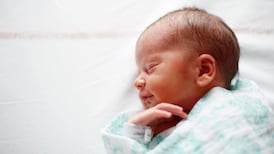Economic analysisHaving been elected on a platform of economic stability, Bertie Ahern knows he must deliver a government that is immune from disruption and strong enough to take tough action if necessary.
Between 1997 and 2002, Fianna Fáil governed with the PDs and "gene-pool" Independents. Judging by his comments yesterday, Ahern would like to go back to the future and reconstruct this arrangement.
It is not without risk. Tax revenues - a crucial resource for keeping Independent TDs in line - will be less buoyant in the next five years. There is also the point that rewarding Independent TDs by putting funds into their constituencies could either induce resentment or revive support for them, just when the public had turned against them. Nonetheless, this remains Ahern's favoured option.
Coalition with the Green Party comes second while a deal with the Labour Party is likely to be a distant third.
Provided the economy grows by as much as Fianna Fáil expects between now and 2012, that is 4.5 per cent in real terms and 7 per cent in nominal terms, revenues should rise by €22.2 billion over the period. Some €13.5 billion of that is committed to rises in public spending of the kind that are non-contentious and agreed by all parties, leaving an additional €8.7 billion to go towards extra spending and tax cuts by 2012.
And there's more. Because the EU regards the Government's annual contribution to the National Pension Reserve Fund as investment rather than spending, Fianna Fáil can increase the Exchequer deficit by €2 billion from half a billion this year to €2.5 billion in 2012 and still - as far as the EU is concerned - keep its budgetary balance in surplus. So all in all - and economic forecasts permitting - Fianna Fáil should have an extra €10.7 billion to allocate over the next five years.
Fianna Fáil's first priority is to increase spending on the National Development Plan by €3.7 billion annually. Of the remaining €7 billion, €2.9 billion will go towards promised spending increases, mainly on increasing pensions, hospital bed numbers and overseas development aid and hiring more teachers, gardaí and hospital consultants. A further €2.2 billion will go towards indexing income tax bands, and PAYE and personal tax credits. That leaves €2 billion to fund PRSI reforms and a cut in the standard and marginal rates of income tax.
The beauty of Ahern's stated preference for partners is that Independent TDs have no alternative macro-economic framework against which to bargain. Once Mary Harney is given the health portfolio and with Michael McDowell retired, the two PD TDs will hardly be in a position to insist on any of their framework being implemented.
Even if they do - and some extension of stamp duty to the second-hand market might be possible if the PDs continue in government - Cowen has ranked tax cuts fourth in his list of priorities, behind the NDP, balancing the books and current spending commitments. If it happens, Ahern's first preference will be as close to a Fianna Fáil majority government as makes no difference.
If a Fianna Fáil/Green coalition emerges, things become more interesting.
Funnily enough, the Greens' economic forecasts on the economy are more prudent (and, incidentally, more in line with those of the ESRI, OECD and Central Bank). They see economic growth averaging 6.5, rather than 7 per cent, in nominal terms, over the next five years. If proven right, €2 billion of Fianna Fáil's €10.7 billion will disappear.
Unless, that is, Fianna Fáil buys into Green taxation policies: to compensate for more pragmatic growth projections, the Greens have said they will increase capital gains tax, slap a levy on carbon emissions, restore the bank levy and introduce an annual site value tax on land. If the Green forecasts are proven right, Fianna Fáil might find itself in a fascinating dilemma; either axe PRSI reforms and tax cuts (which would make sense as this package amounts to €2 billion and both Fianna Fáil and the Greens seem to prioritise indexation over other tax cuts), or annoy small but influential parts of its support base by implementing some elements of Green tax policy.
Last - and probably least in Ahern's view - is the prospect of coalescing with the Labour Party. Compared to Fianna Fáil's €2.9 billion, and based on Fianna Fail's own estimates, Labour's spending plan amounts to €6.6 billion, €4.9 billion of which was agreed with Fine Gael and €1.7 billion of which is specific to Labour. As Labour broadly agrees with Fianna Fáil on the amount of extra spending for the NDP, this leaves very little for tax cuts. Unless, of course, the commitment to balance budgets is revisited.
Having brokered the EU Stability Pact, Labour's Ruairí Quinn could credibly use it to the advantage of a Fianna Fáil-led coalition. While urging governments to run budgets that are in balance or surplus, the pact allows them to run deficits of up to 3 per cent of GDP. In 2012 terms, pushing it to its limits, this could give an extra €8 billion in resources, a tantalising prospect.
Designed to ensure budgetary stability in the EU, if talks with Independents and the Greens get nowhere, the Stability Pact could end up underpinning the stability of a pact between Fianna Fáil and Labour.







